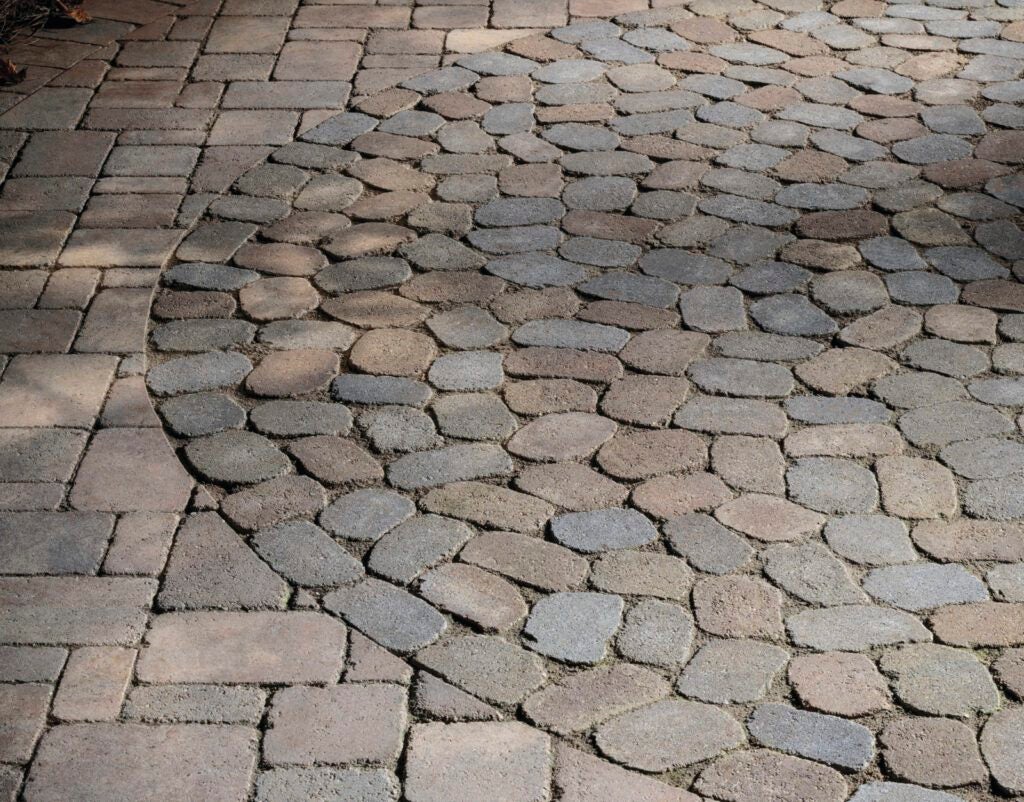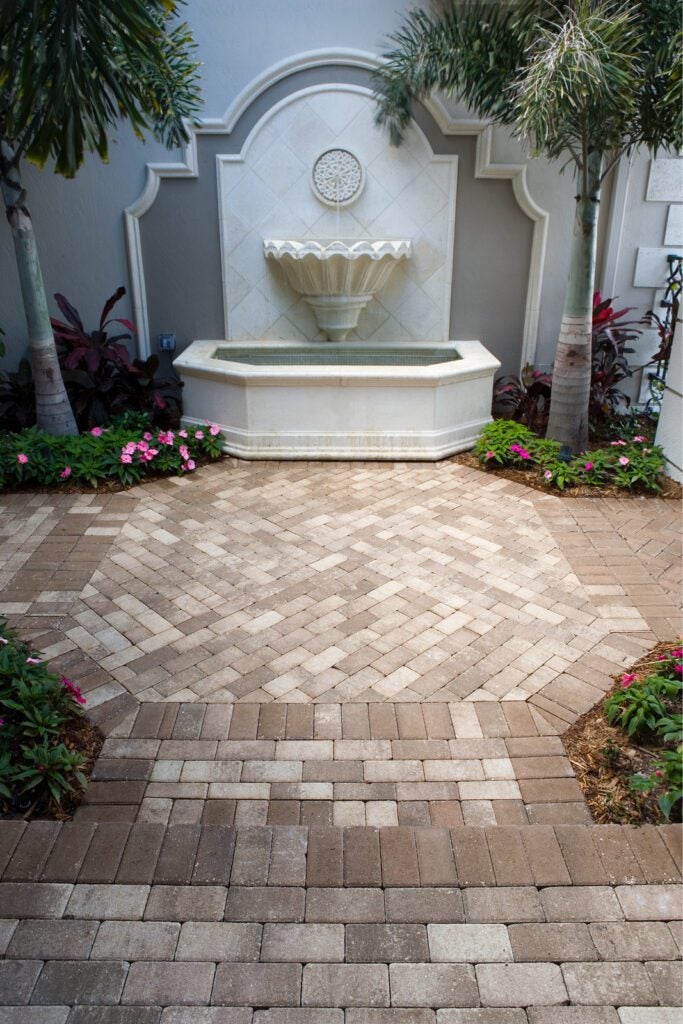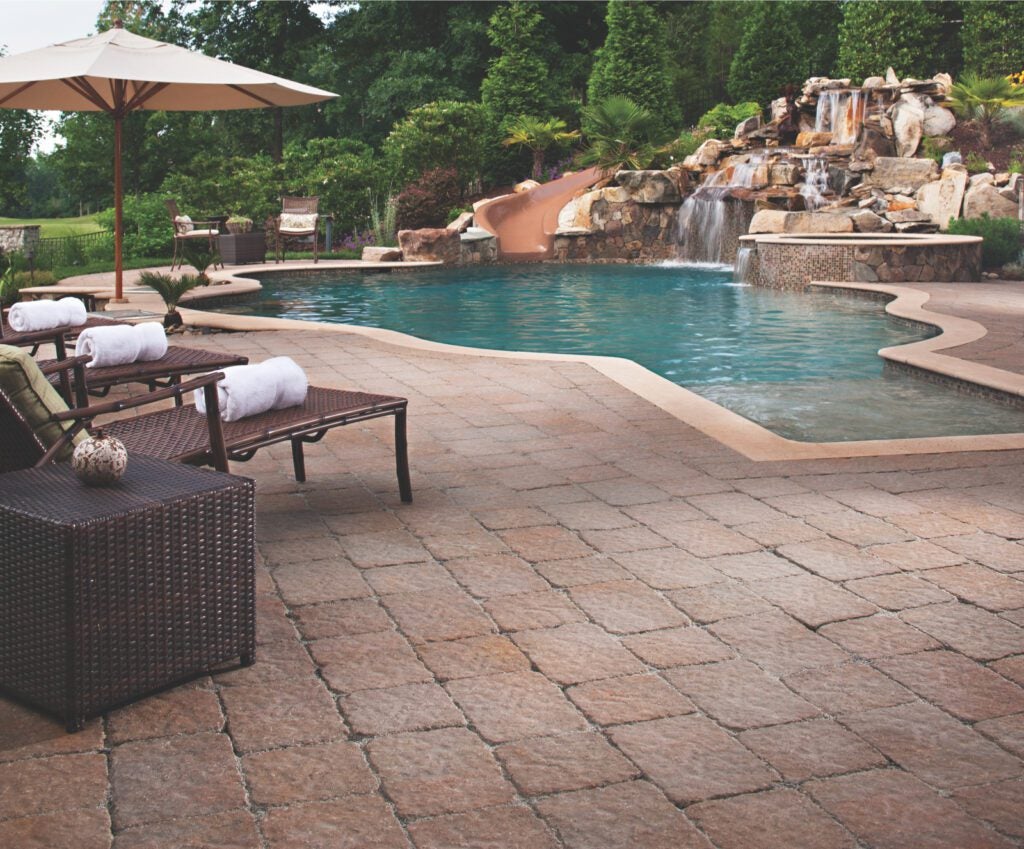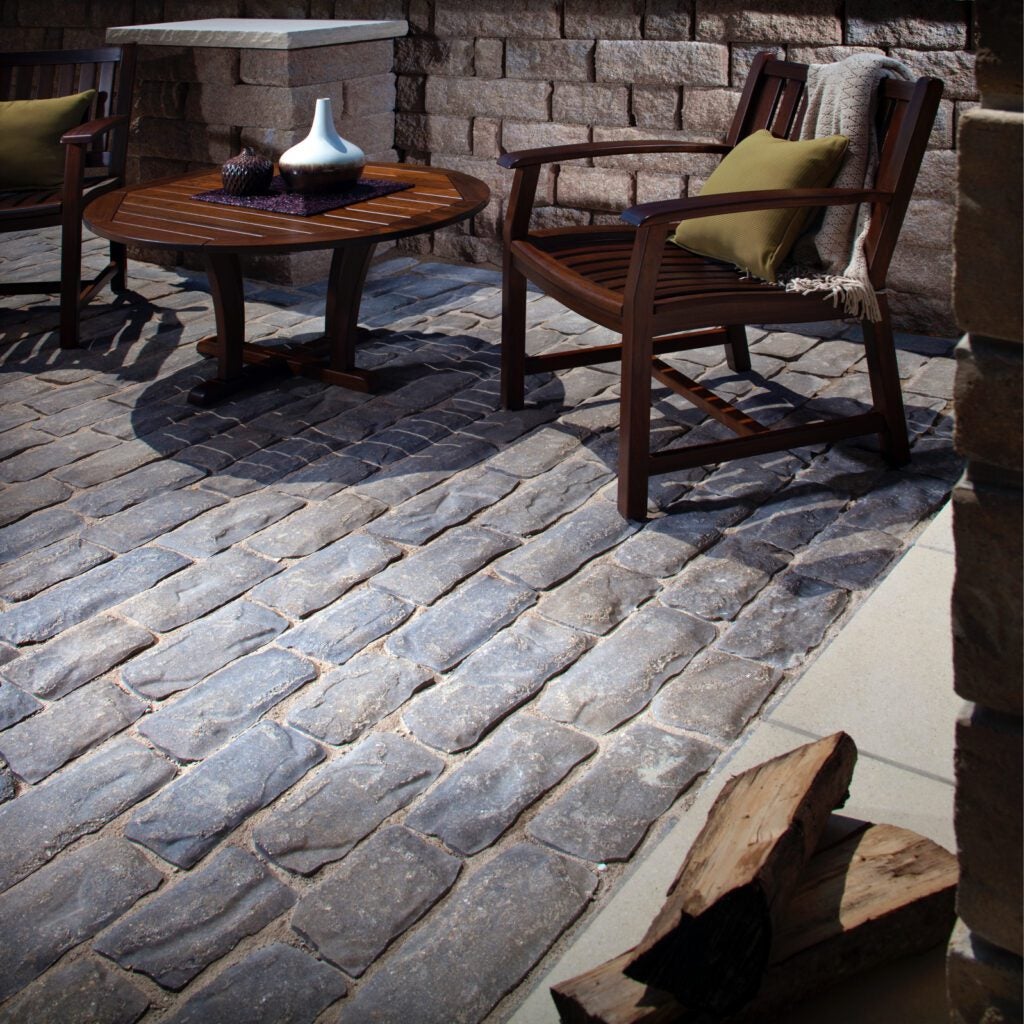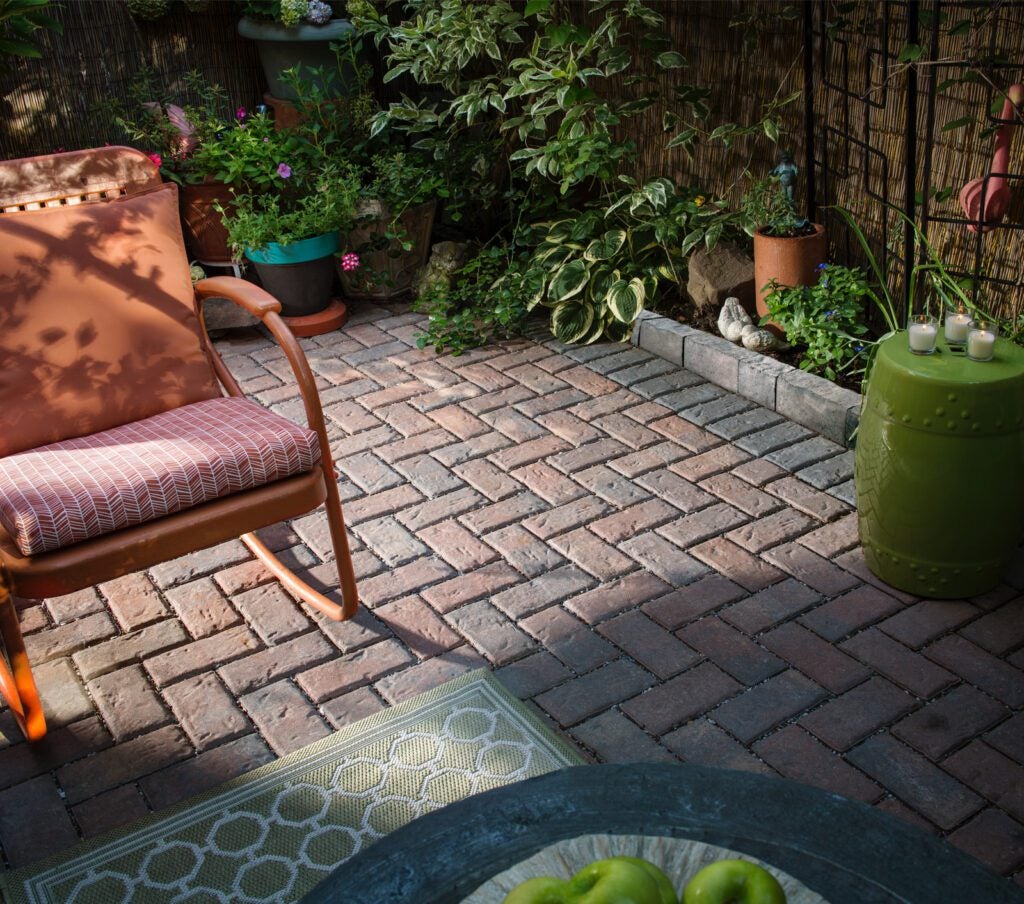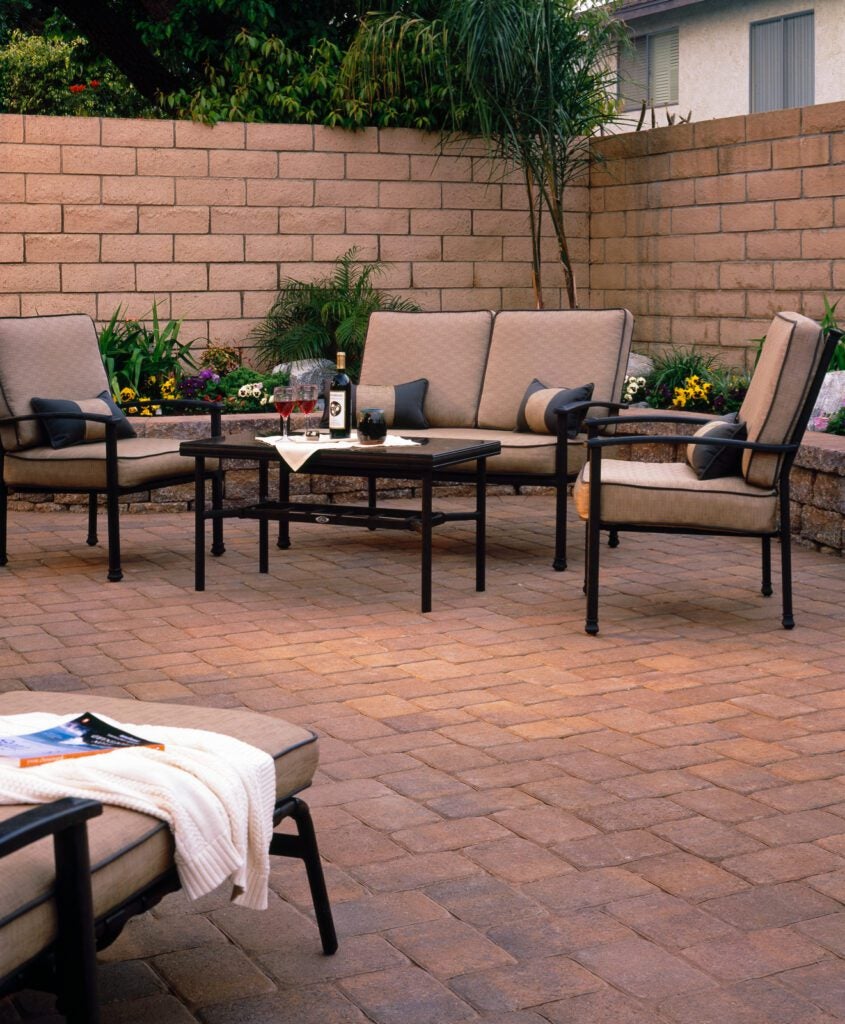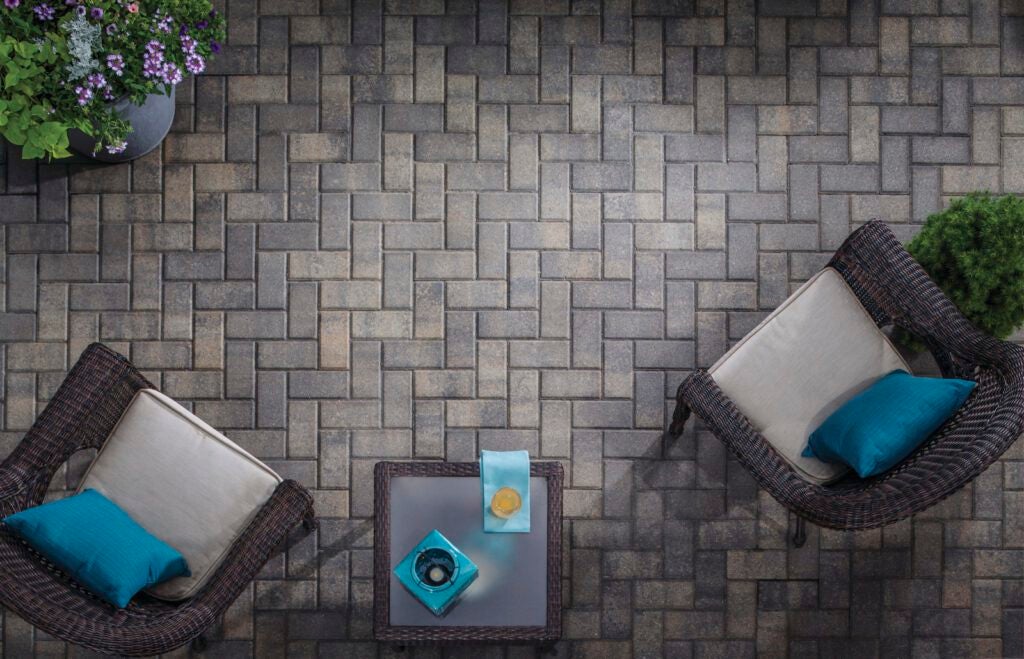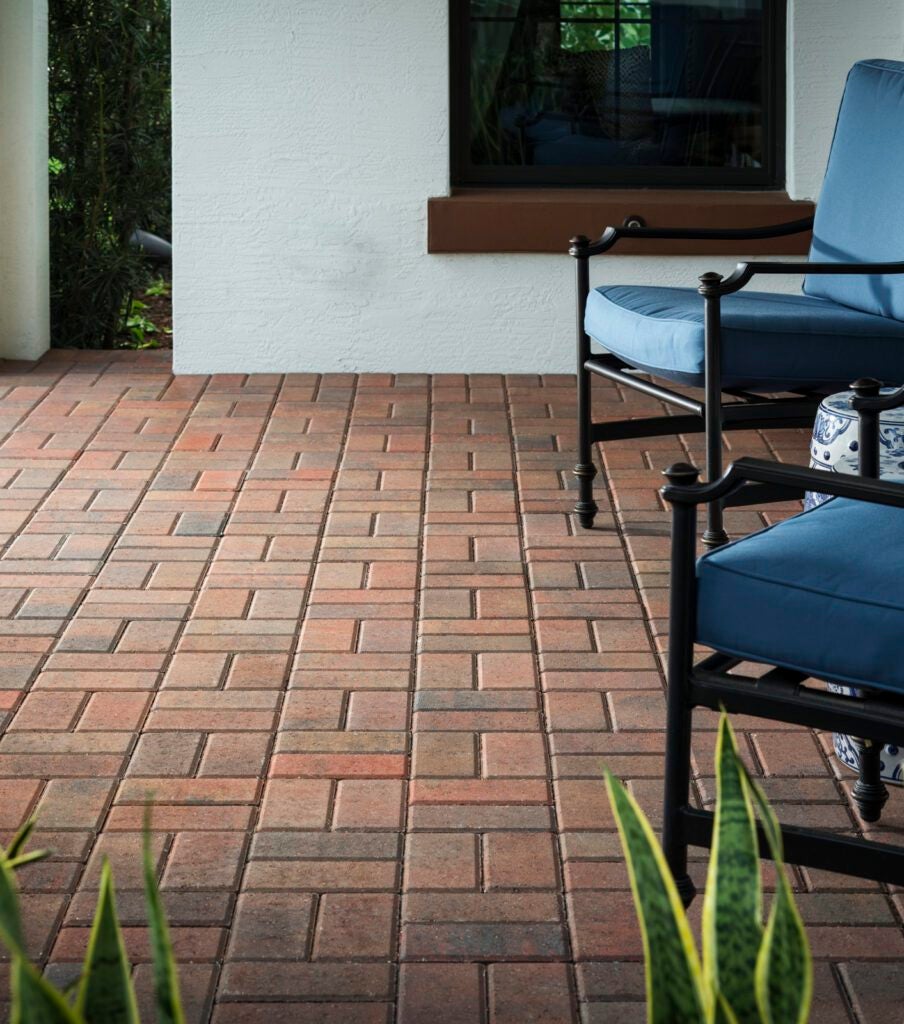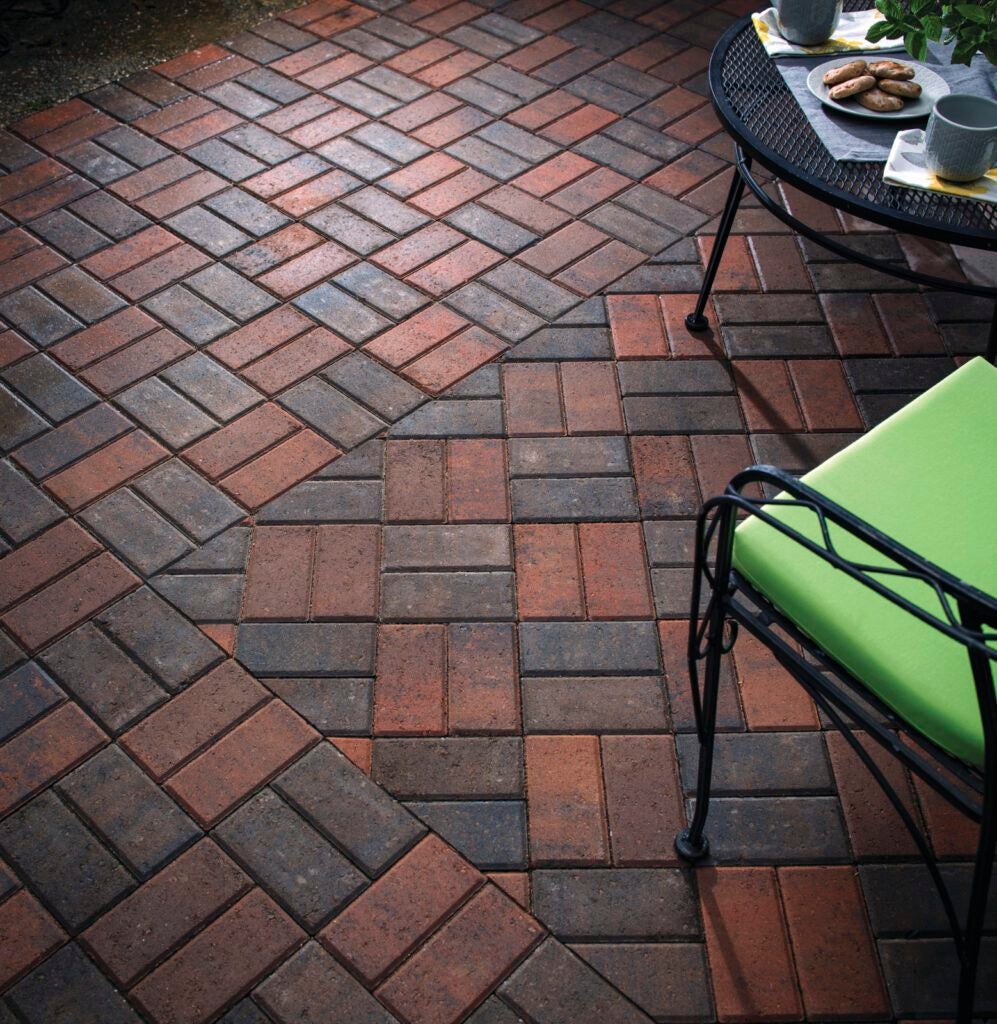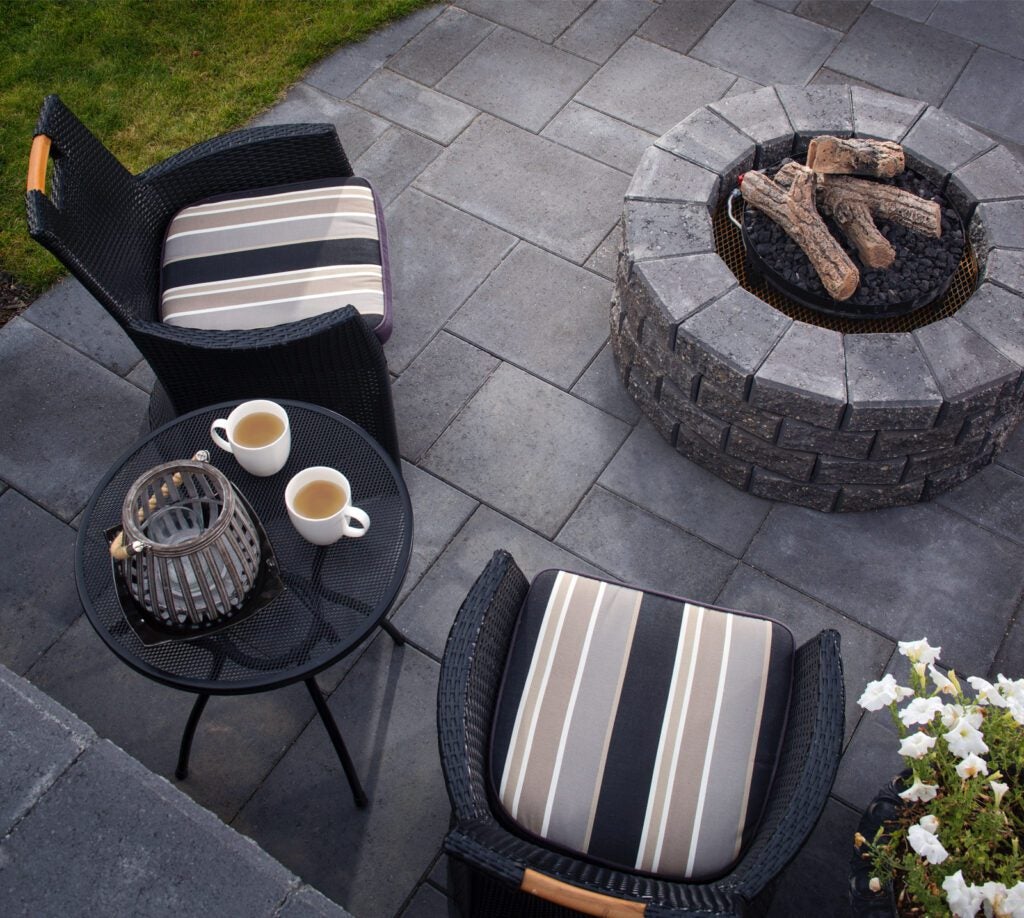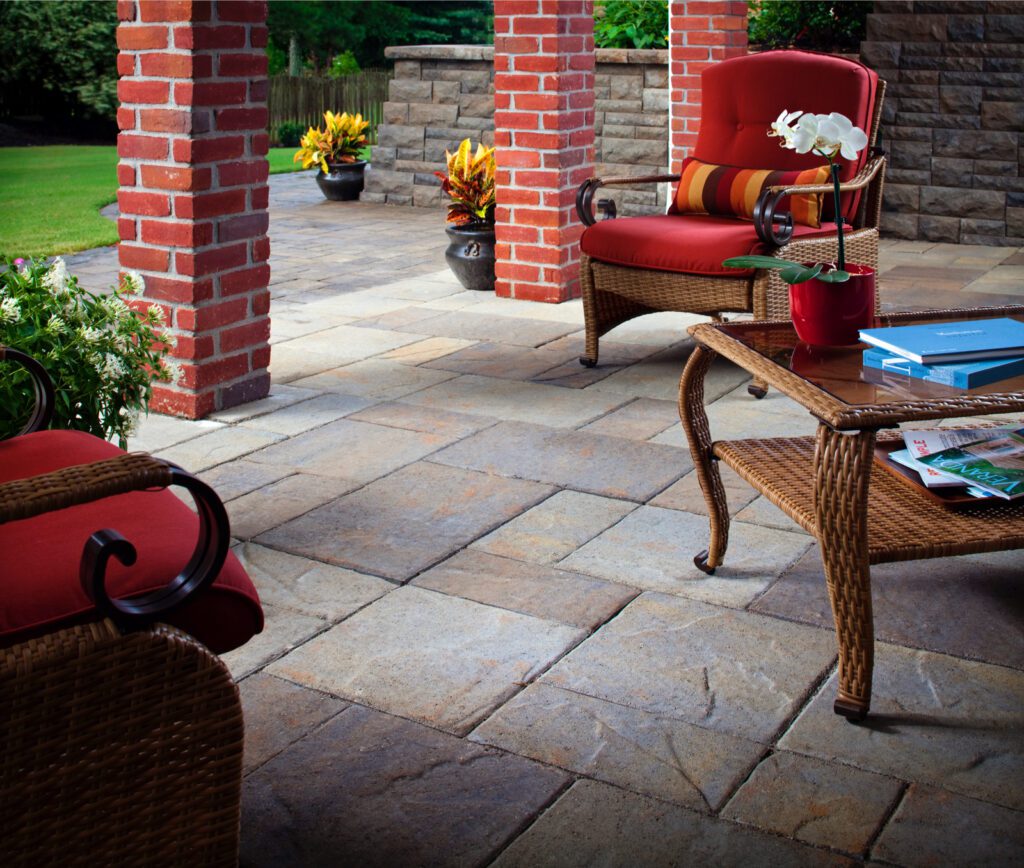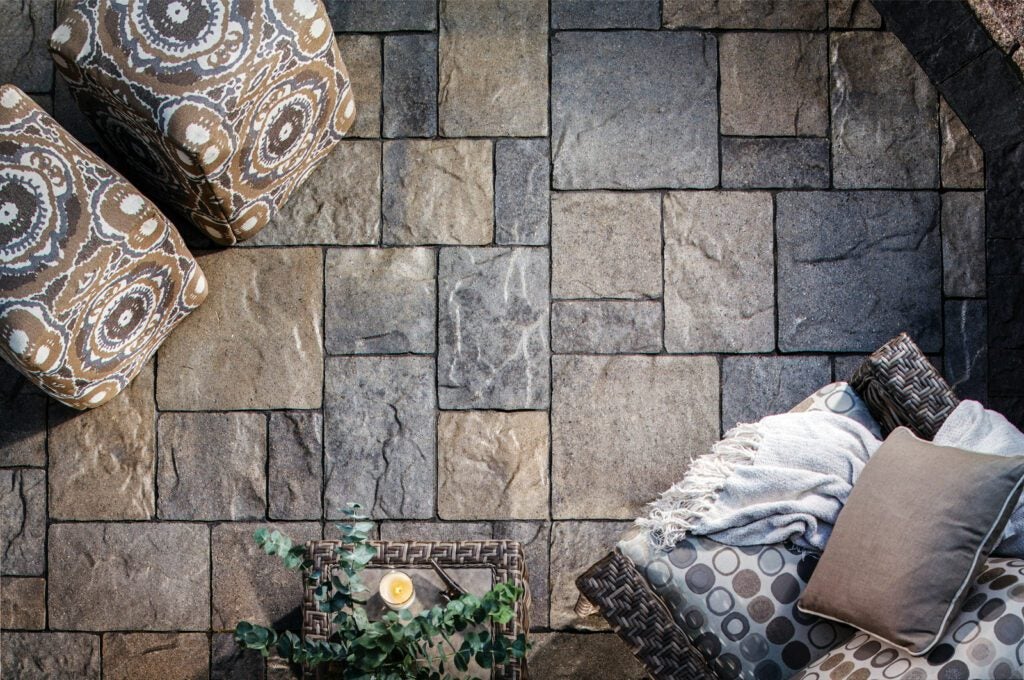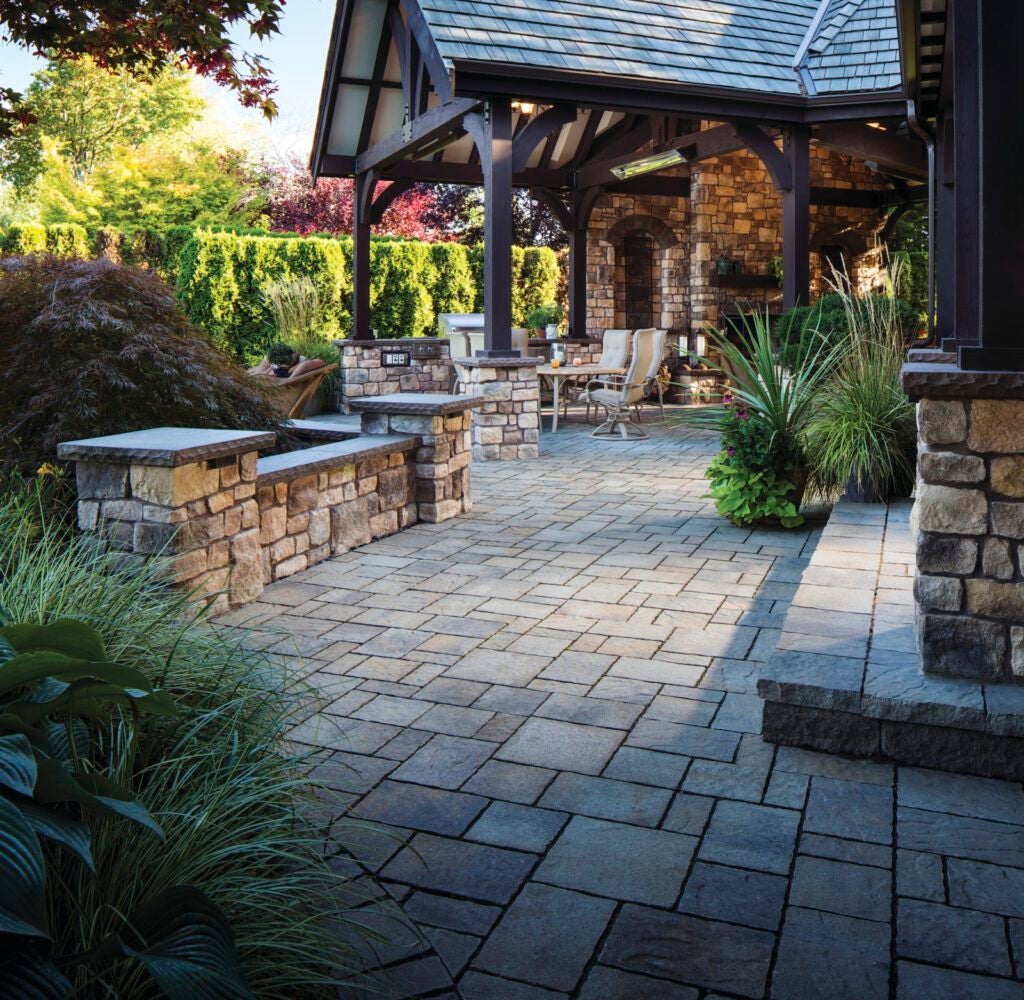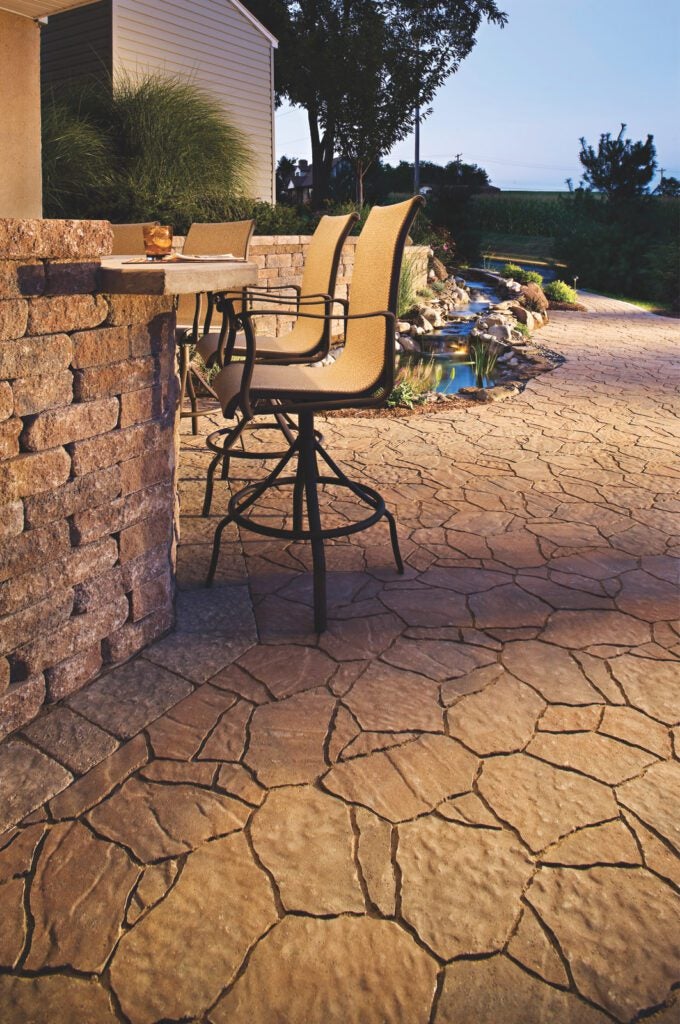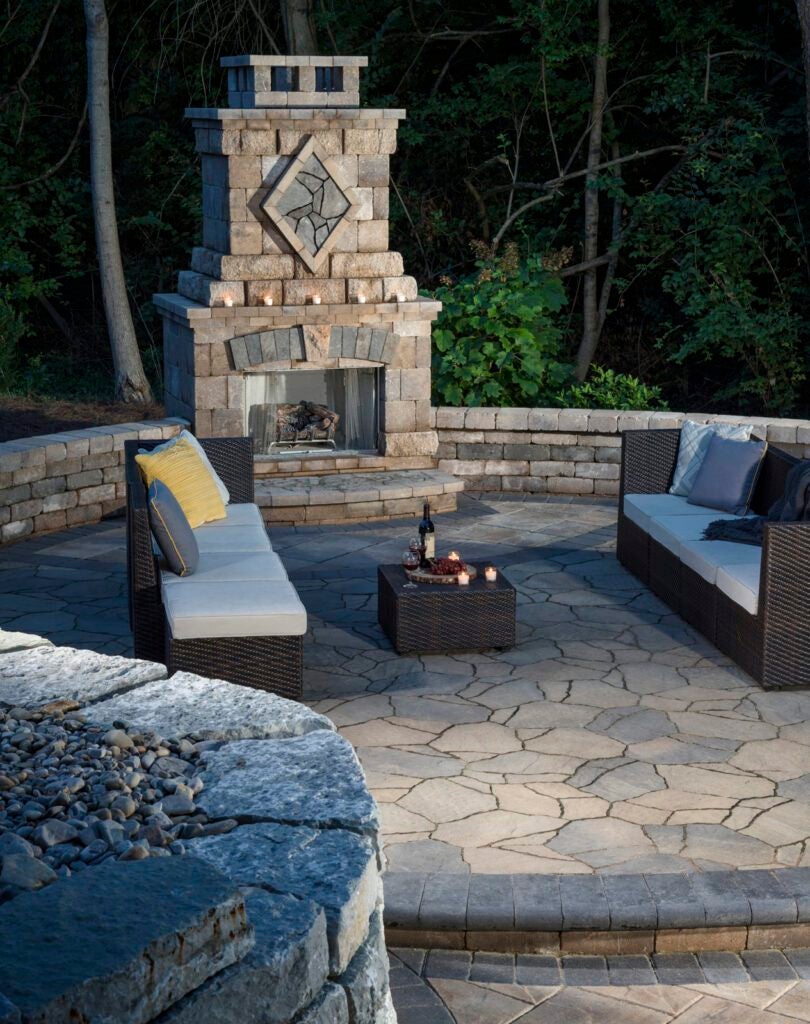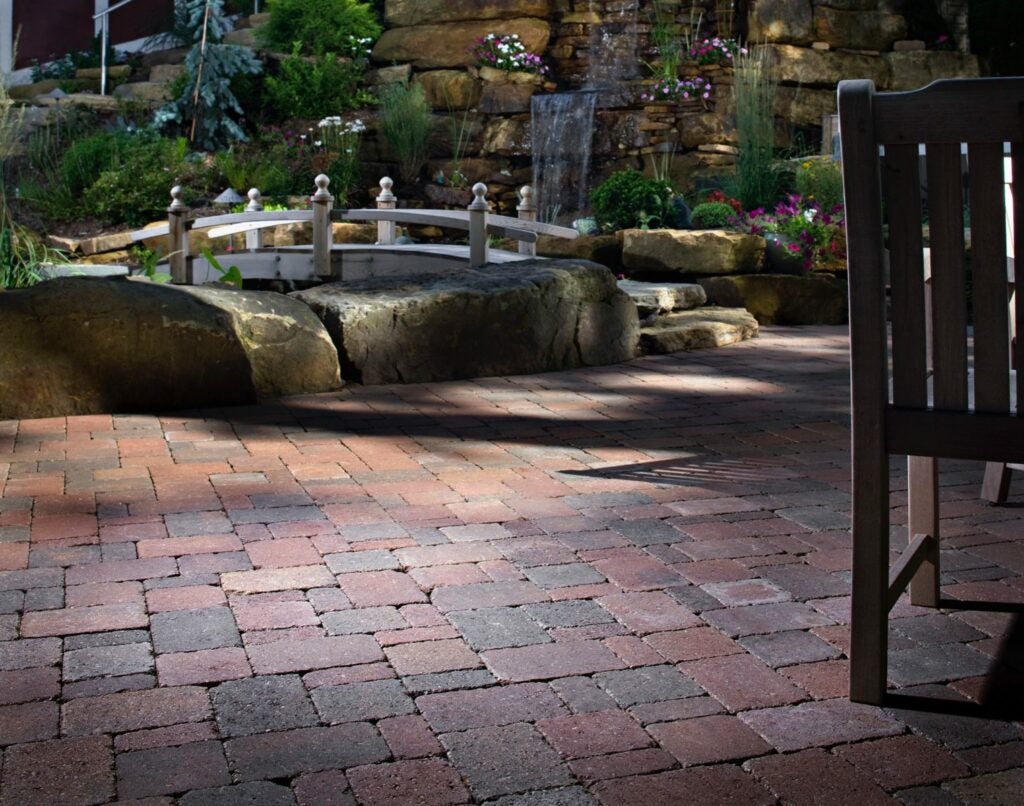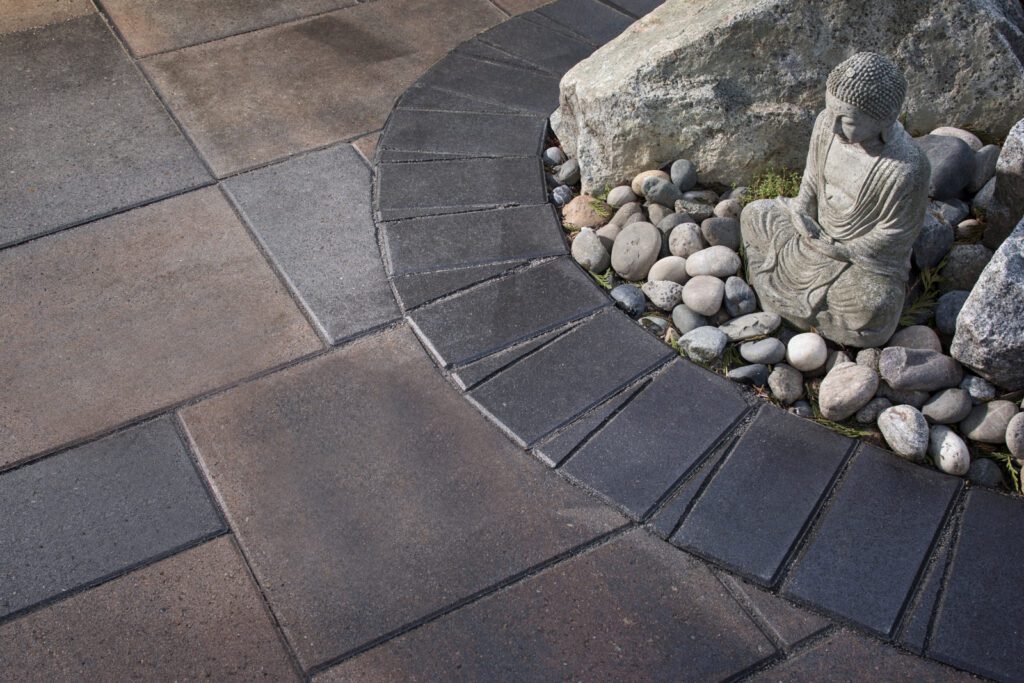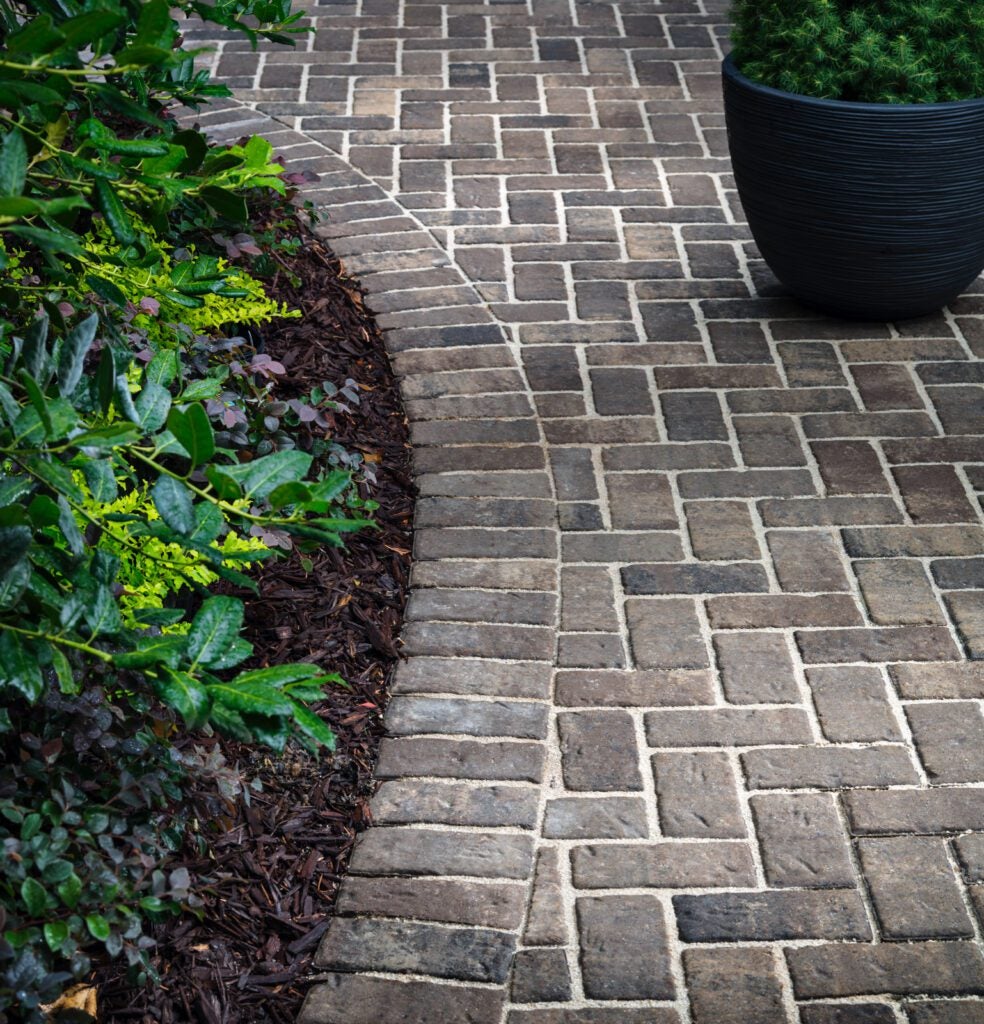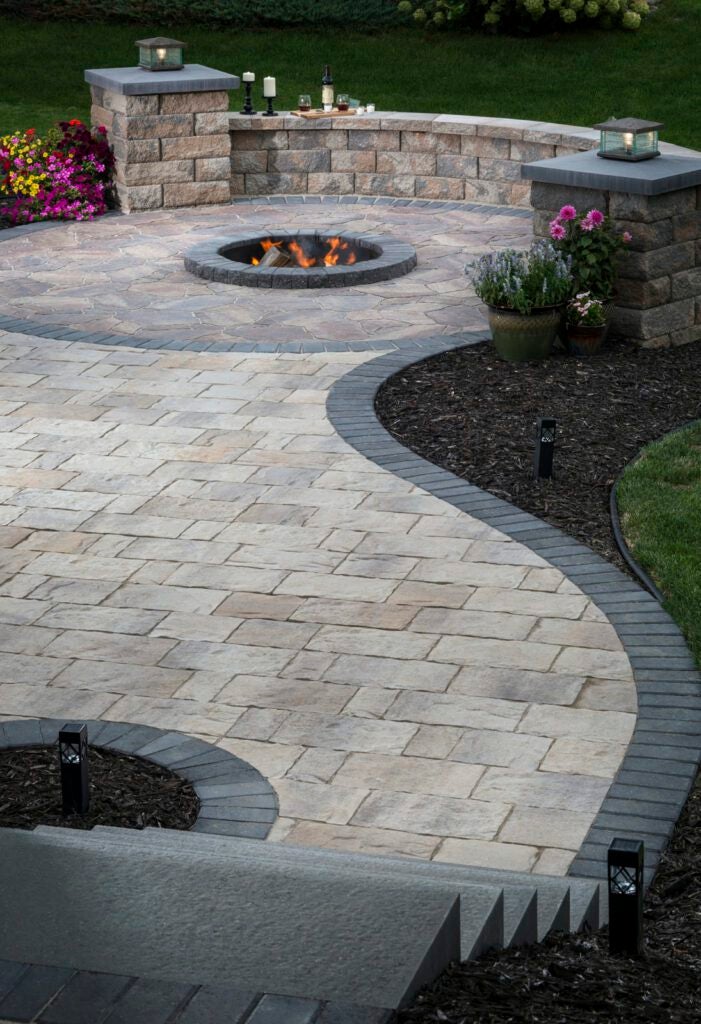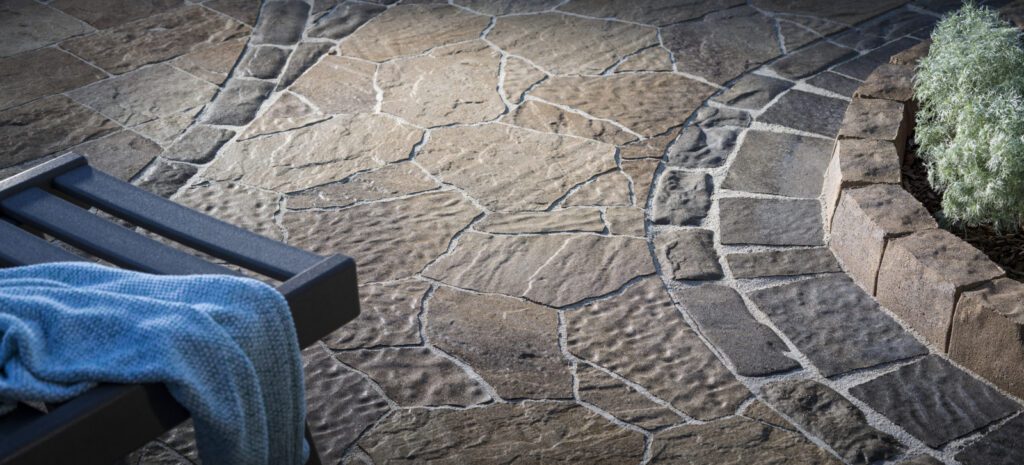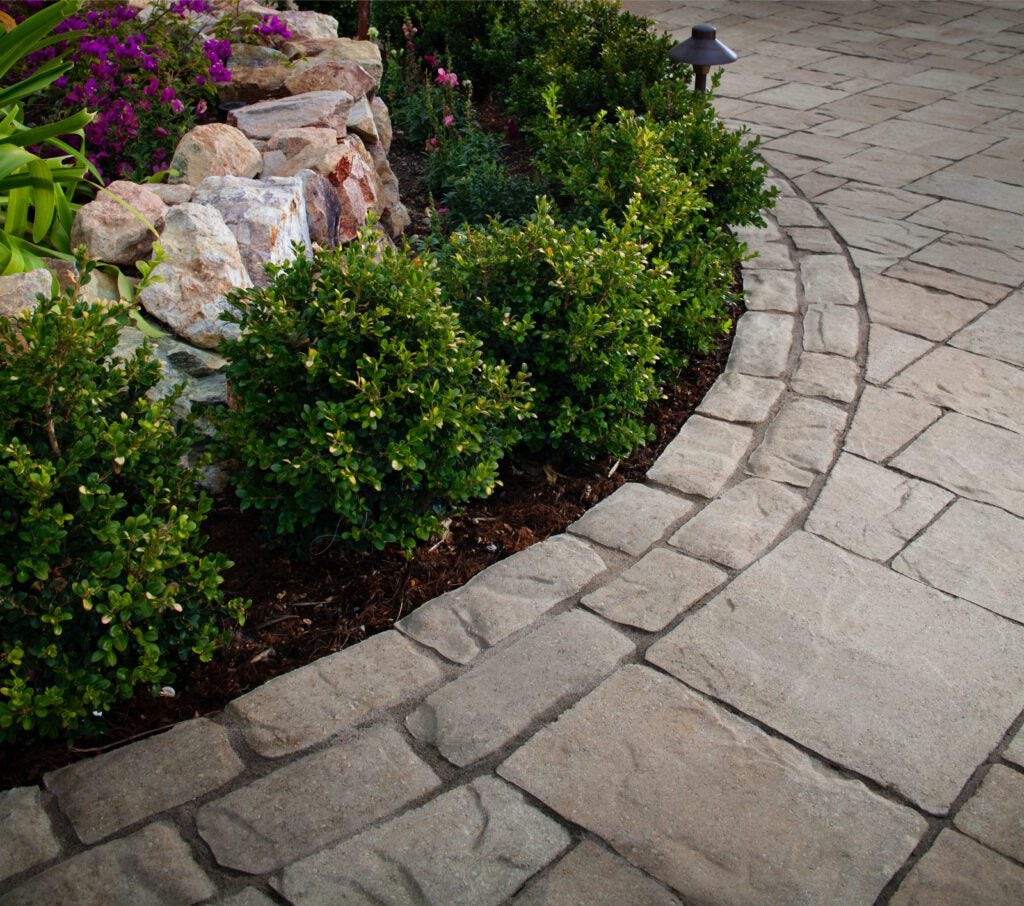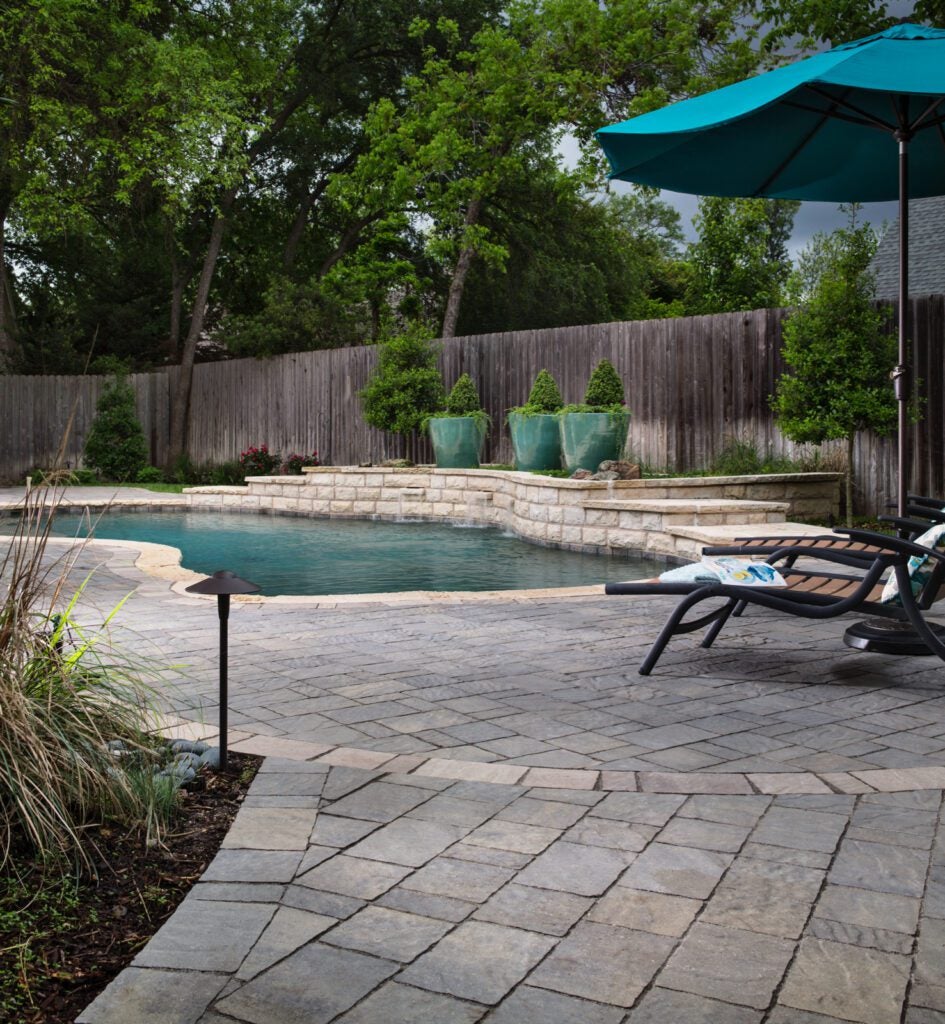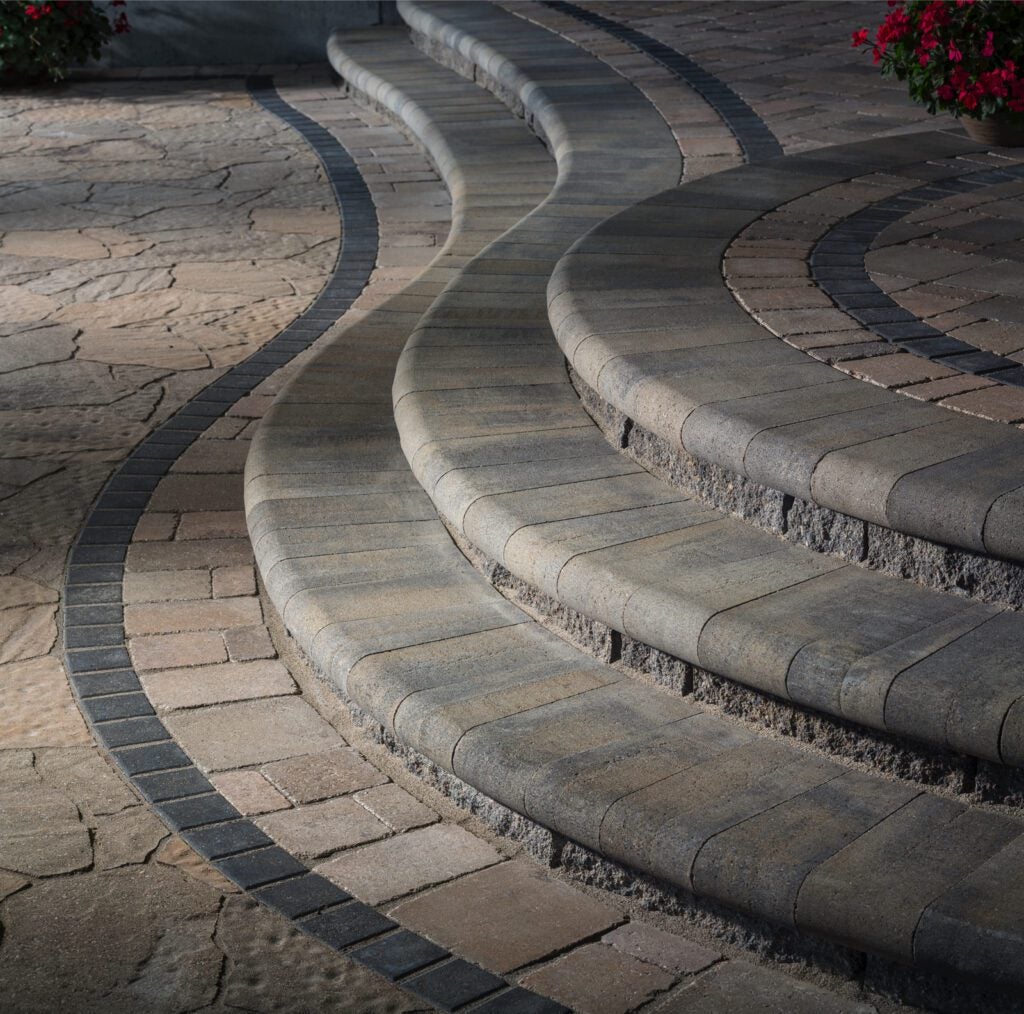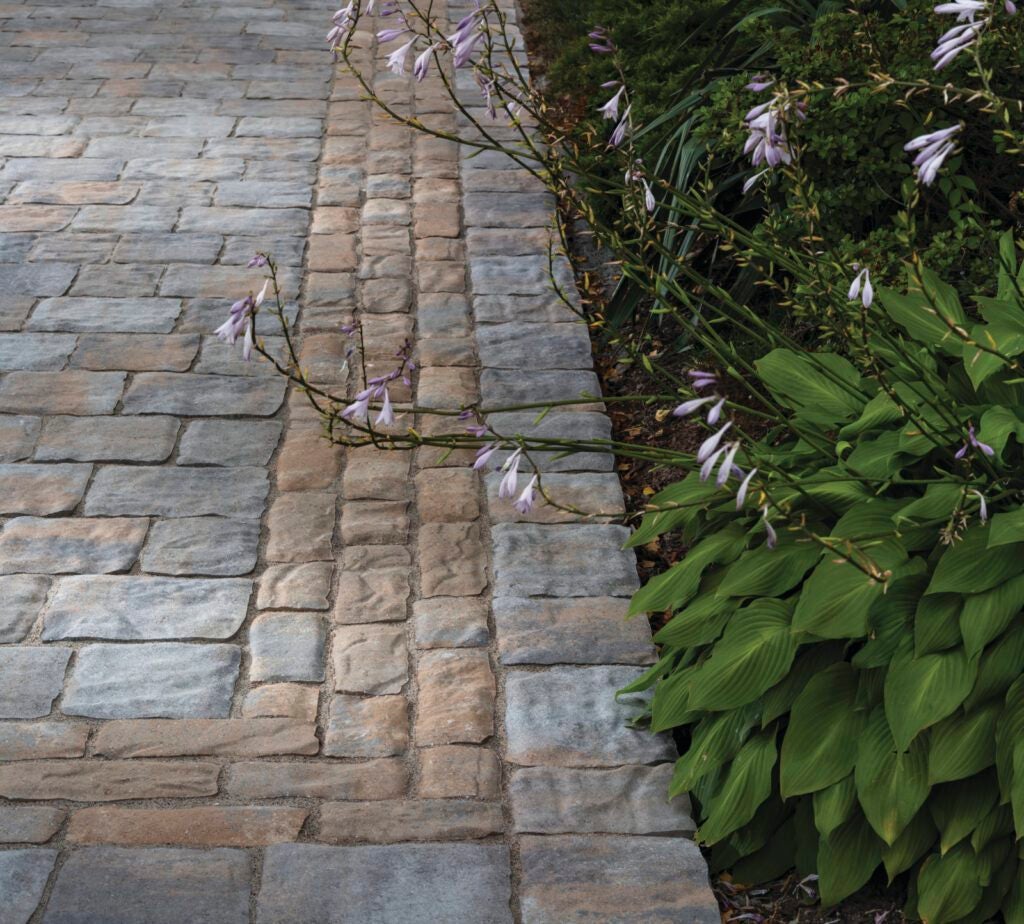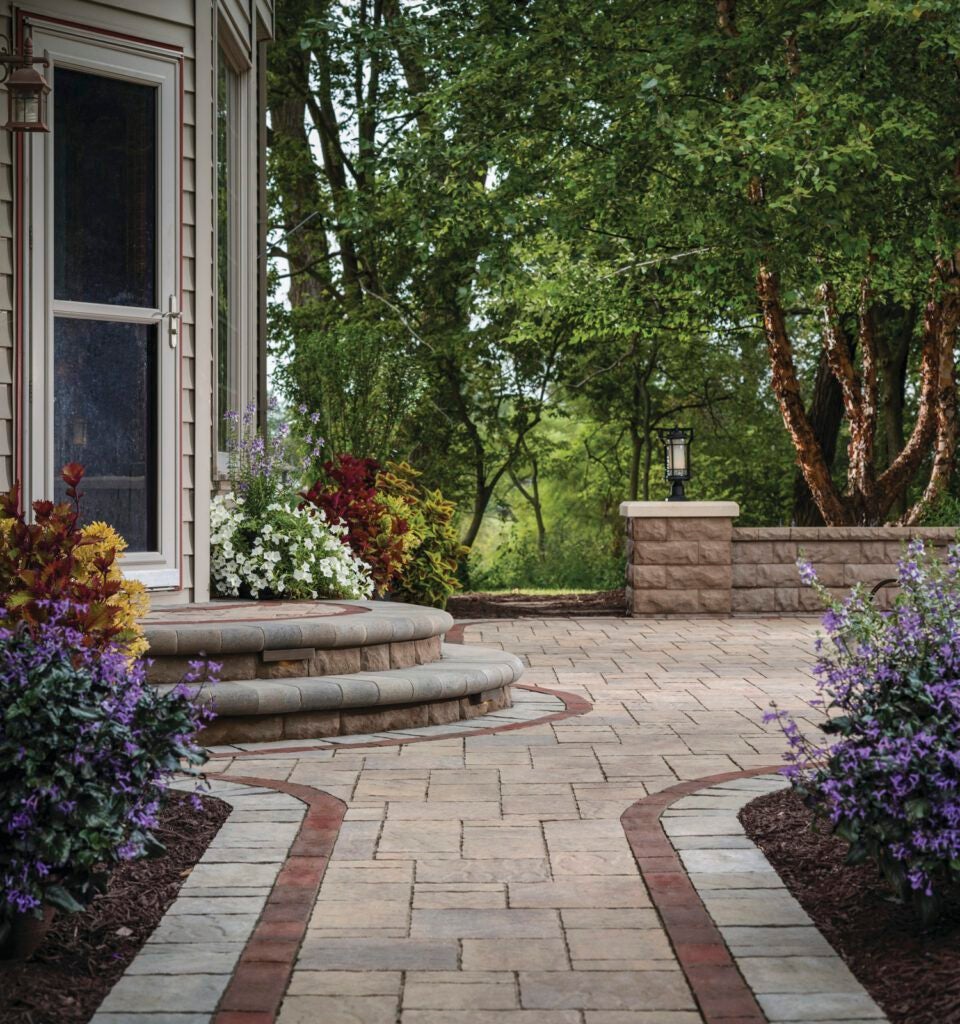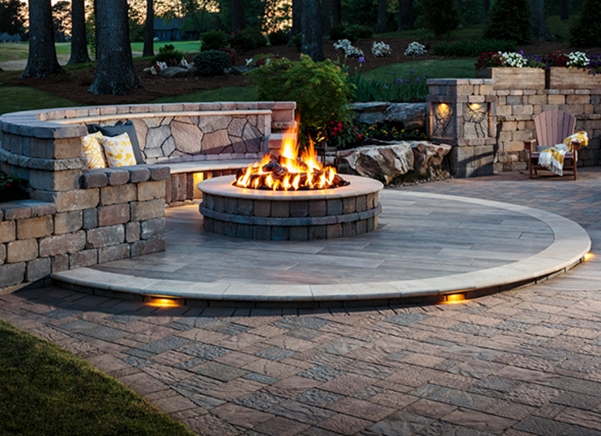When designing a new paver patio, there are a number of options to consider with regard to paver laying patterns. From modular paver patterns to more traditional laying patterns, your choice will vary depending upon the style and shape of pavers you choose.
Below are some examples of paver laying patterns to help guide you through the process. You can even mix and match different styles, shapes and patterns to create unique and interesting designs.
Traditional Shapes and Paver Patterns
For those who like to go with the tried and true, you can’t go wrong with rectangular and cobble-style pavers laid into one of the following traditional patterns. These patterns work especially well in smaller spaces that can be overwhelmed by larger styles of pavers.
Running Bond
A running bond pattern is one in which the pavers are laid in rows running in the same direction. You can either go with a classic running bond, or you can get creative with color tones, borders and pattern direction.
Herringbone
A herringbone pattern is one in which rectangular pavers are laid in a zig-zag pattern. To add additional pop to a herringbone design, consider adding a contrasting border along the patio edges.
Basket Weave
Basket weave patterns utilize rectangular pavers to create block designs. To add contemporary flair to this traditional laying pattern, you can alternate the color tones or laying direction to create modular designs.
. . .
Modular Shapes and Paver Patterns
Modular shaped pavers offer a variety of square and rectangular sizes that can be laid in multiple laying patterns that are less repetitive, visually dynamic, and create a contemporary look that works especially well for larger patios.
3-Piece Modular Paver Patterns
4-Piece Modular Paver Patterns
. . .
Asymmetrical Shapes and Random Laying Patterns
Asymmetrically shaped pavers create a natural look and often incorporate false joints that create the illusion of multiple shapes laid at random. Multi-shape cobble-style pavers can also be laid in a multi-piece pattern that emulates a more random look, as an alternate to using a traditional laying pattern.
. . .
Paver Patio Borders
Patio border selection can add an entirely new dimension to a patio’s laying pattern. Options can range from using the same paver at a different angle to choosing a contrasting color, shape and/or style of paver (or more than one). But the options don’t end there. Once the border paver is selected, there are a number of border laying pattern options, as well.
Soldier Course Borders
The soldier course is likely the most-used laying pattern for a paver border. For this pattern, rectangular pavers are laid in a row, side-by-side.
Sailor Course Borders
Another popular border, the sailor course lays rectangular pavers lengthwise in one or more rows. For additional visual interest, wide sailor course borders can be created using more than one type of paver.
Inlaid Patio Borders
Striking paver patterns and designs can be created by laying a contrasting patio border further inside the paver field.
. . .
